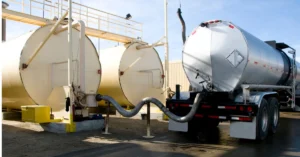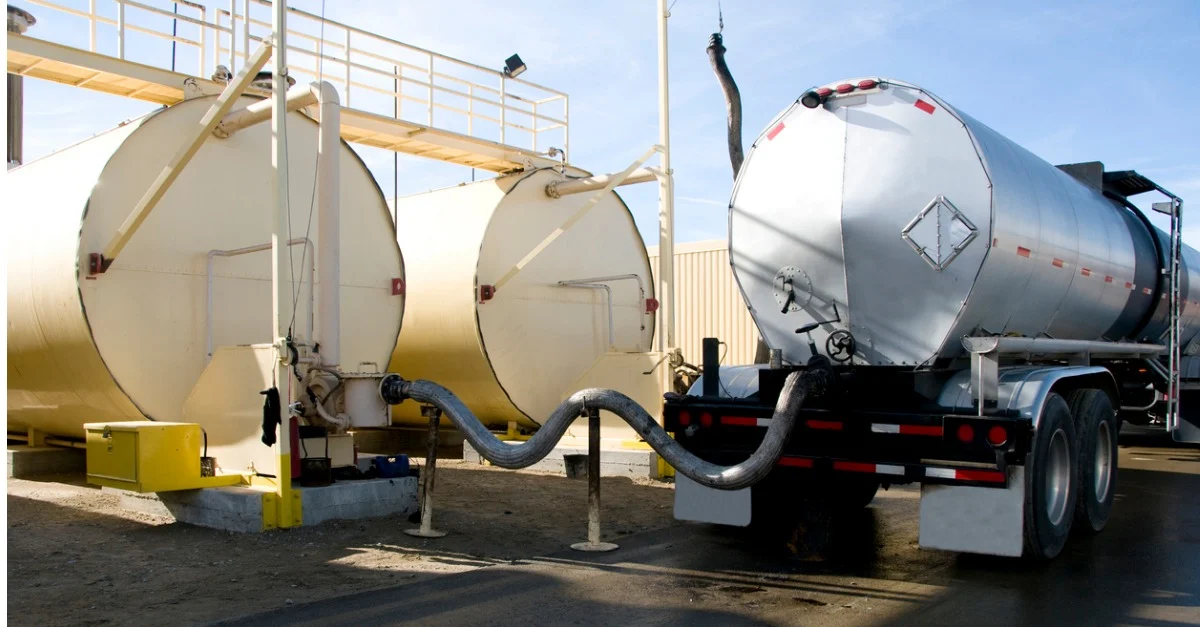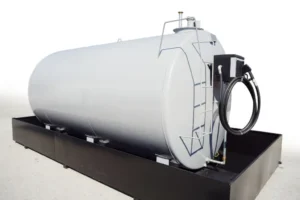As an operator of storage tanks, you know that properly loading and unloading of aboveground storage tanks is critical to safe and compliant operations. When done incorrectly, loading and unloading can lead to environmental incidents, workplace accidents, and regulatory violations. However, when performed correctly using industry best practices, these operations can be completed safely and efficiently. This article provides a comprehensive checklist for loading and unloading of aboveground storage tanks to help ensure you have procedures and controls in place for success. By following this guidance, verifying compliance with all applicable regulations, training your employees, inspecting equipment, and monitoring operations, you can have confidence in your loading and unloading programs. Keep this checklist on hand as a reference to guarantee safe and responsible transfers each and every time.

Select the Proper Equipment for Your Aboveground Tanks
Selecting Transfer Equipment
When loading and unloading of aboveground storage tanks, choosing proper transfer equipment is crucial for safe and efficient operations.
First, select hoses specifically rated for chemical transfer. Standard garden hoses or fire hoses will not withstand the pressures or chemicals involved and could rupture, creating spills and safety hazards. High-pressure, reinforced hoses with static grounding wires are recommended.
For pumping, a centrifugal pump is typically used. Choose a pump rated for your specific chemicals that can achieve the desired flow rates. Diaphragm or peristaltic pumps may be better for high-viscosity or shear-sensitive fluids. Include a strainer to prevent foreign debris from entering the pump.
Finally, consider a flow meter to monitor rates, a valve manifold to control flow, and dry break couplers for easy connection and disconnection. For added precaution, use a secondary containment system like a concrete berm or dike to help contain any spills.
With the proper equipment selected and safety measures in place, operators can feel confident loading and unloading of aboveground storage tanks efficiently and responsibly. However, equipment is only part of the process; properly training employees on operating procedures and safety standards is also essential for success.
Standard Operating Procedure for Loading and Unloading Fuel Tank
To ensure safe loading and unloading operations, establish clear work practices and procedures.
- Develop a comprehensive operations manual that details each step of the loading and unloading process. This should include checklists for required personal protective equipment (PPE), emergency response procedures, and all safety precautions. Provide training to all employees on proper protocol.
- Designate qualified personnel to oversee loading and unloading. These individuals should have experience with the specific materials being handled and all equipment operations. They are responsible for directing the entire process and ensuring protocol is followed.
Safety Precautions While Loading Unloading ASTs
Take appropriate safety precautions including:
- Wearing necessary PPE like steel-toed shoes, protective gloves, eyewear, and fire-resistant clothing
- Checking that all hoses, valves, and couplings are properly connected and sealed before starting operations
- Ensuring the receiving tank has sufficient volume for the full load and is properly grounded
- Verifying the type of material and any handling precautions with the driver before they connect to your tank
- Have an emergency response plan in place in the event of spills, leaks, or accidents. This includes procedures for containing spills to prevent environmental damage, evacuating the area, notifying local authorities, and seeking medical help if necessary. Conduct regular emergency response drills to practice implementation.
Following these best practices for safe operations will minimize the risks associated with loading and unloading of aboveground storage tanks. Be sure to also follow all local, state and federal regulations governing the handling and storage of hazardous materials.
Conduct Thorough Inspections Before Any Transfer
Before loading or unloading an aboveground storage tank, conducting thorough inspections of all equipment is critical.
Inspect Piping and Valves
Carefully inspect all piping, hoses, and valves to ensure there are no visible signs of damage or defects that could lead to leaks or spills during product transfer. Check that all valves are properly closed or open as required for the specific operation. Verify the correct positions of all valves in the piping system.
Check Emergency Equipment
Ensure that all emergency equipment like fire extinguishers, emergency shutoff valves, spill kits, and eye wash stations are fully functional and accessible. Conduct tests of emergency shutoff valves to guarantee they are operating properly prior to beginning any loading or unloading operation.
Review Procedures and Safety Data Sheets
Review the written procedures for loading, unloading, and product handling to refresh yourself on all steps and safety precautions. Re-familiarize yourself with the properties and hazards of the specific products by studying Safety Data Sheets (SDS). Take note of any special handling requirements or personal protective equipment (PPE) needed based on the SDS.
Monitor Tank Levels and Pressures
For loading operations, check the current tank level and capacity to calculate how much product can be safely loaded. For unloading, check current tank levels and pressures to determine if the tank can be safely emptied. Monitor tank levels and pressures continuously throughout the entire loading or unloading process.
Conducting comprehensive inspections before each transfer and closely supervising operations as they proceed are the keys to safe and compliant loading and unloading of aboveground storage tanks. Following all proper procedures and safety precautions will minimize the risks of spills, environmental damage, injury, or other serious incidents.
Monitor the Transfer and Make Adjustments as Needed
During product loading and unloading, closely observe the entire process to ensure safe and efficient operations. Pay attention to product flow rate, looking for any decreases that could indicate a blockage or equipment malfunction. Make any necessary adjustments to valve positions or pump speeds according to standard operating procedures.
Check all equipment components, including pumps, meters, hoses, and valves for signs of wear or damage that requires maintenance. Faulty or failing parts should be serviced or replaced immediately to avoid spills or releases. All equipment should be properly grounded to prevent static electricity buildup.
Closely monitor tank levels using gauges and sensors to avoid overfilling. Make flow rate adjustments as the tank reaches capacity to achieve a steady, controlled flow until loading or unloading is complete. Once product transfer is finished, double-check that all valves are fully closed and locked or tagged out according to site safety protocols.
Carefully inspect the area around the tank and any containment structures for spills or leaks before leaving the area. Deploy spill kits or response teams immediately in the event of a release. Complete all required documentation, including bills of lading, volume reports, and maintenance logs.
Strictly following protocols and closely monitoring operations during bulk liquid transfers into or out of aboveground storage tanks will minimize safety hazards, reduce environmental impact, decrease product loss, and ensure compliance. Consistency and vigilance are key to safe and efficient loading and unloading of aboveground storage tanks .
Complete Final Inspections and Ensure Tanks Are Properly Sealed
Once loading or unloading operations have been completed, final inspections should be done to ensure the tanks are properly sealed and secured.
Seal All Openings
Inspect tanks to verify all openings, including manways, valves, flanges, and seals are fully closed. Tighten as needed to prevent leaks or spills. storage tank seals helps to prevent leakage.
Check Emergency Equipment
Confirm emergency shutoff valves, containment equipment, fire extinguishers, spill kits, and other emergency gear are in place and functional in the event of an unforeseen situation.
Review Connections and Hoses
Double check that all hoses, pipes, and connections between tanks, trucks, and pumping equipment are disconnected and sealed. Remove or secure any loose hoses to avoid tripping hazards.
Secure Tanks
Make sure tanks remain securely anchored in place. Check tie-downs, anchors, and tank stands to guarantee tanks will not shift or move from their installed positions.
Complete the Final Walk Around
Conduct a final walk around tanks and the surrounding area. Look for any remaining tools, equipment, or materials left behind. Pick up any debris or spills. Ensure the area is clean and clear.
Log Activities
Record details about loading or unloading activities including times, dates, materials transferred, operators present, and any issues encountered. Proper recordkeeping and documentation provide an audit trail and can help identify areas for improvement.
Following these best practices for final inspections and ensuring tanks are sealed properly helps promote safe operations, prevents accidents and spills, and satisfies regulatory compliance. Conducting loading and unloading activities in a responsible manner protects workers, communities, and the environment.
Following Safe Loading Procedures: Slowly Fill From the Bottom
To safely load and unload aboveground tanks, following proper procedures is critical.
Slowly Fill From the Bottom
When loading product into an aboveground tank, it is important to fill the tank slowly from the bottom up. Connect loading hoses or pipes to the bottom outlet of the tank and begin pumping product in at a controlled flow rate. Filling too quickly can cause turbulence inside the tank, resulting in the mixing of vapors and oxygen. This creates a hazardous situation where flammable vapors can ignite.
As the tank is filled, frequently check the level gauges to monitor the product level and fill rate. Never overfill the tank. Stop filling once the product reaches the maximum safe fill level as indicated on the tank’s specification plate. Overfilling can cause structural damage to the tank and release of hazardous vapors.
After loading is complete, close all valves and properly disconnect any hoses or pipes from the tank. Check for any leaks or spills and address them immediately according to the facility’s spill response procedures.
Following these best practices for safe loading and unloading of aboveground storage tanks will help prevent incidents by controlling hazards, and protecting workers and the environment. Consistently verifying fill rates, maximum levels and closing valves are simple but important steps to ensure safe operations. Working slowly and carefully, with proper oversight and monitoring at all times, is the key to success.
Unloading Safely: Release Pressure and Empty From the Top
To unload safely and prevent accidents, follow these best practices:
Depressurize the tank before opening any valves or lids.
Release all pressure from the tank through the pressure relief valve before attempting to open or remove any other tank openings. Make sure the pressure gauge reads 0 psi to confirm the tank is fully depressurized.
Open and unload the tank from the top access point.
Once depressurized, open the tank through the top hatch or manway. Do not open any other valves, lids, or openings until the unloading process has been completed through the top. Inserting the unloading hose or pipe through the top opening begins pumping or draining out the contents from the top of the tank in a controlled manner.
Pumping or draining from the top allows the contents to empty from the highest point, avoiding the potential build-up of vapors. It also reduces the chances of static charge build-up that could lead to a fire or explosion hazard. By following safe practices for loading and unloading of aboveground storage tanks, operators can prevent accidents, injuries, and environmental harm and optimize the efficiency of transfer operations.
Conclusion
As you have seen, properly loading and unloading of aboveground storage tanks requires careful planning and strict adherence to safety protocols. By following the comprehensive checklist outlined here, you can help ensure efficient transfer operations, prevent environmental contamination, and protect your personnel and equipment. Make safety your top priority during every loading and unloading evolution. Double-check connections, monitor pressures, enforce hot work controls, and never leave the transfer area unattended. Stay up to date with regulations and best practices. Invest in high-quality equipment and routine maintenance. Promote a culture where safety comes before speed or cost savings. If at any point something does not seem right, stop operations immediately to reassess. The few minutes lost will be well worth avoiding a serious incident. By maintaining a diligent approach, you can achieve many successful loading and unloading operations. But never forget that it only takes one misstep to cause a disaster. Remain vigilant and follow the guidelines – safety first.




